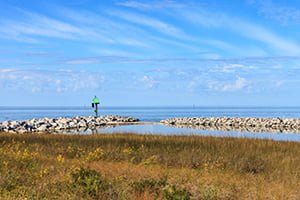Inland property adjacent to our waterways has always been, and will always be, vulnerable to the forces of nature. Flow energy in our rivers and streams is subject to surges caused by heavy rain events. The shorelines of our lakes and ponds are often negatively impacted by wave action and stormwater runoff.
We have seen many negative impacts of past practices. For example, native plant species have been removed in favor of hard armor, turf grasses, or invasive plant species. Outdated land management practices have resulted in the transport of destructive nutrients into our inland waters.
But, we have also learned a great deal from these negative impacts… And the good news is that all these problems can and must be successfully addressed. Join Stormwater University and returning speaker Peter Hanrahan (CPESC) to explore the tools, techniques, and practices that offer hope for a future which promises both functional and sustainable shorelines.
Learning Objectives
- Explain how traditional methods of shoreline management have given way to more innovative and effective solutions
- Understand innovative best management practices and the positive environmental impacts of carefully planned shoreline management
- Explain the environmental advantages of the use of native plants and species
- Understand the benefits of careful infiltration and drainage practices, sustainable designs, and responsible stewardship
About Instructor






